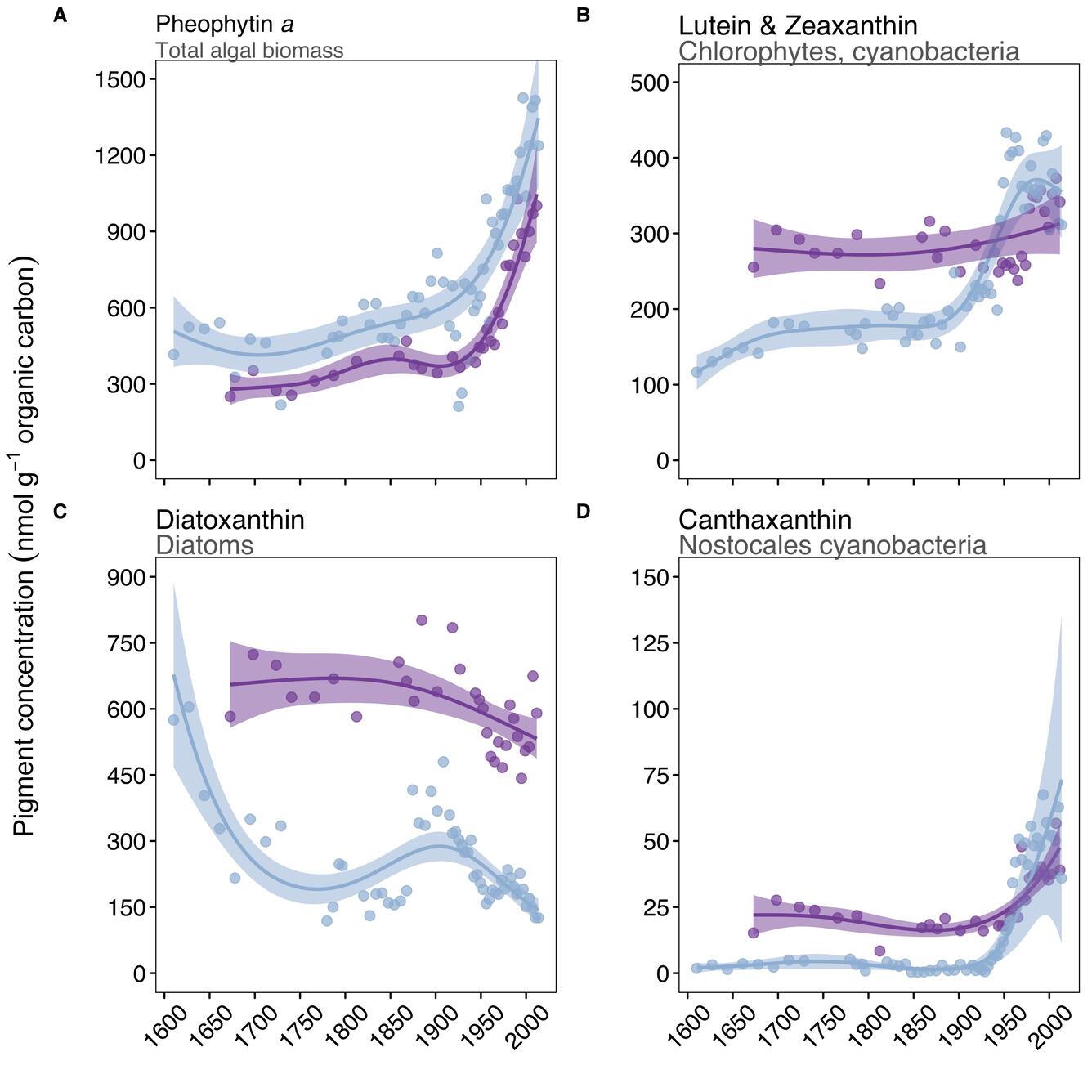Stressed Mountain Lakes Enter Unprecedented Ecological States
This article is part of the Fall 2020 issue of the Earth Science Matters Newsletter.
The interactions of many human-caused changes to the Earth are pushing the scientific community to understand their consequences like never before. The effects of global change are evident in many areas including national parks. USGS long-term monitoring in Rocky Mountain National Park helped discover one such consequence: increasing eutrophication of alpine lakes since 2010. Additionally, these observations mirror those from other mountain lakes worldwide. Eutrophication refers to the process of a body of water becoming excessively rich in nutrients, leading to ecologically disruptive growth in aquatic plants and algae and an eventual depletion in dissolved oxygen from the water when the algae dies. To determine if the trend in increasing algae and lake productivity is new, the scientists used paleolimnology, the study of lake sediments over time, to explore when the changes in lake algae occurred in the past and how quickly the changes happened from the past to the present.
In alpine lakes of Rocky Mountain National Park, lake productivity and the growth of filamentous green algae on the bottom of clear alpine lakes has increased dramatically since 2010. Algal blooms are unsightly, especially in alpine lakes, and can signal a shift toward species that are harmful to aquatic ecosystems and even people. Using algal and biogeochemical proxies from lake sediment cores, the scientists examined patterns in biogeochemistry, lake productivity, and the composition of primary producers from the end of the Little Ice Age (circa 1850) to the present in alpine Sky Pond, and the subalpine Loch, in Rocky Mountain National Park. Researchers aimed to compare the recent composition and primary productivity of the lakes with variations over the last few hundred years and determine whether recent changes were correlated with a combination of anthropogenic and climate changes.
A profound change in lake algae was observed since the mid-20th century. Algal biomass increased slightly when temperatures warmed after 1850, but far greater changes began around 1950 and continue to accelerate to the present. Diatoms shifted mid-century from species preferring lake bottom and nutrient-poor habitats to species that live in the water column and thrive in nutrient-rich environments. Biomarkers of green algae and cyanobacteria also began to increase around 1950, with current concentrations now 200–300% greater than 1950 values.
Possible causes of lake eutrophication include:
- increased atmospheric deposition of the nutrient nitrogen (N) beginning around 1950-1960, related to expansion of industrial fertilizer use, livestock production, and fossil fuel combustion;
- increasing wind delivered dust inputs since about 1980, supplying ecosystems with the nutrient phosphorus (P);
- warming summer air and water temperatures, which is an observed trend in the Loch Vale watershed since 1983 but is also evident in lake temperatures worldwide.
The increased concentrations of green algae in Loch Vale lakes indicates that alpine lakes far from direct human activity are becoming more eutrophic due to global-scale environmental changes. Although managers of national parks and other protected areas cannot combat the impacts of climate change on their own, they can work with other agencies to reduce other environmental stressors, particularly the input of the nutrients N and P, that contribute to productivity. This information also gives managers knowledge by which they can prioritize their funds and efforts to manage and protect public lands.
The paper “Multiple stressors interact to force mountain lakes into unprecedented ecological states” is published in The Proceedings of the Royal Society B.




